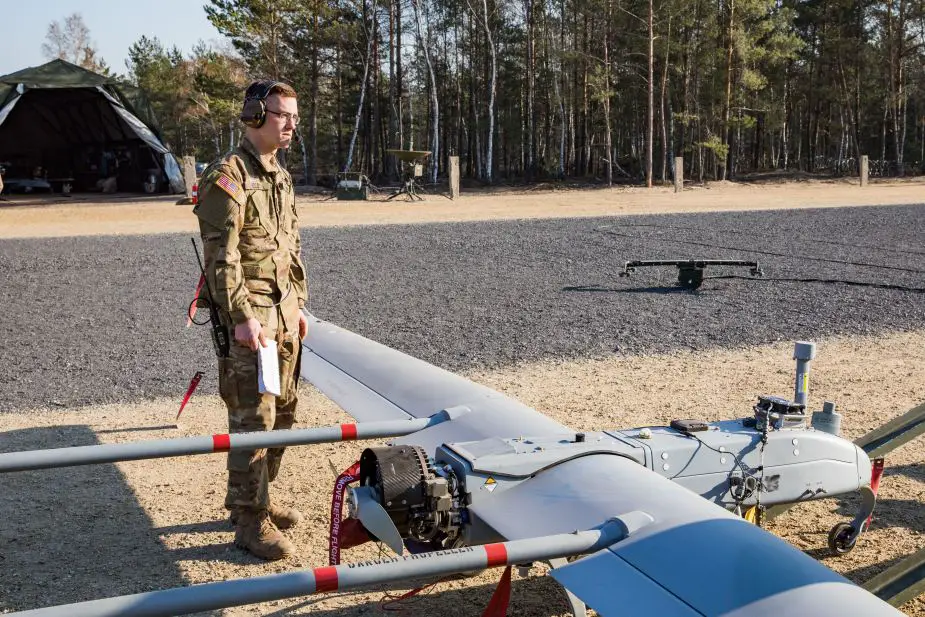U.S. soldiers to train with RQ-7 Shadow UAS in Poland
Unmanned Aerial Vehicle aviators from U.S. armed forces with Delta Company, 1st Engineer Battalion, 1st Armored Brigade Combat Team, 1st Infantry Division flew training missions with the RQ-7 Shadow at Camp Trzebien, Poland April 5, 2019.

Spc. Christopher McCoy, an Unmanned Aircraft Systems Repairer, with the 1st Engineer Battalion, 1st Armored Brigade Combat Team, 1st Infantry Division, supervises the preflight checks on an RQ-7 Shadow Unmanned Aerial Vehicle during his evaluation to become a UAV crew chief on an airfield at Camp Trzebien, Poland, April 5, 2019. (Picture source U.S. DoD)
The U.S. Soldiers from Delta company have been training all week, launching and flying the RQ-7s, otherwise known as Shadows, to certify on the aviation systems. The first version of the RQ-7 Shadow Tactical Unmanned Aircraft System was initially developed by the American Company AAI located in Hunt Valley, Maryland that was acquired by Textron in 2007.
Textron Systems’ Shadow Tactical Unmanned Aircraft System is proven over more than one million flight hours for the U.S. Army, Marine Corps, Special Operations groups, the Australian Defence Force, and the Swedish and Italian armed forces.
Production of RQ-7 Shadow UAS shifted to a generally improved RQ-7B variant in the summer of 2004. The RQ-7B features new wings increased in length to 4.3 m. The new wings are not only more aerodynamically efficient, but they are also "wet" to increase fuel storage up to 44 liters for endurance of up to 6 hours. The payload capability has been increased to 45 kg.
The RQ-7B can see targets up to 125 kilometers away from the brigade tactical operations center, and recognize tactical vehicles up to 8,000 feet above the ground at more than 3.5 kilometers slant range, day or night.
The RQ-7 Shadow ground control station transmits imagery and telemetry data directly to the Joint Surveillance and Target Attack Radar System, All Sources Analysis System, and Advanced Field Artillery Tactical Data System in near real time.


























